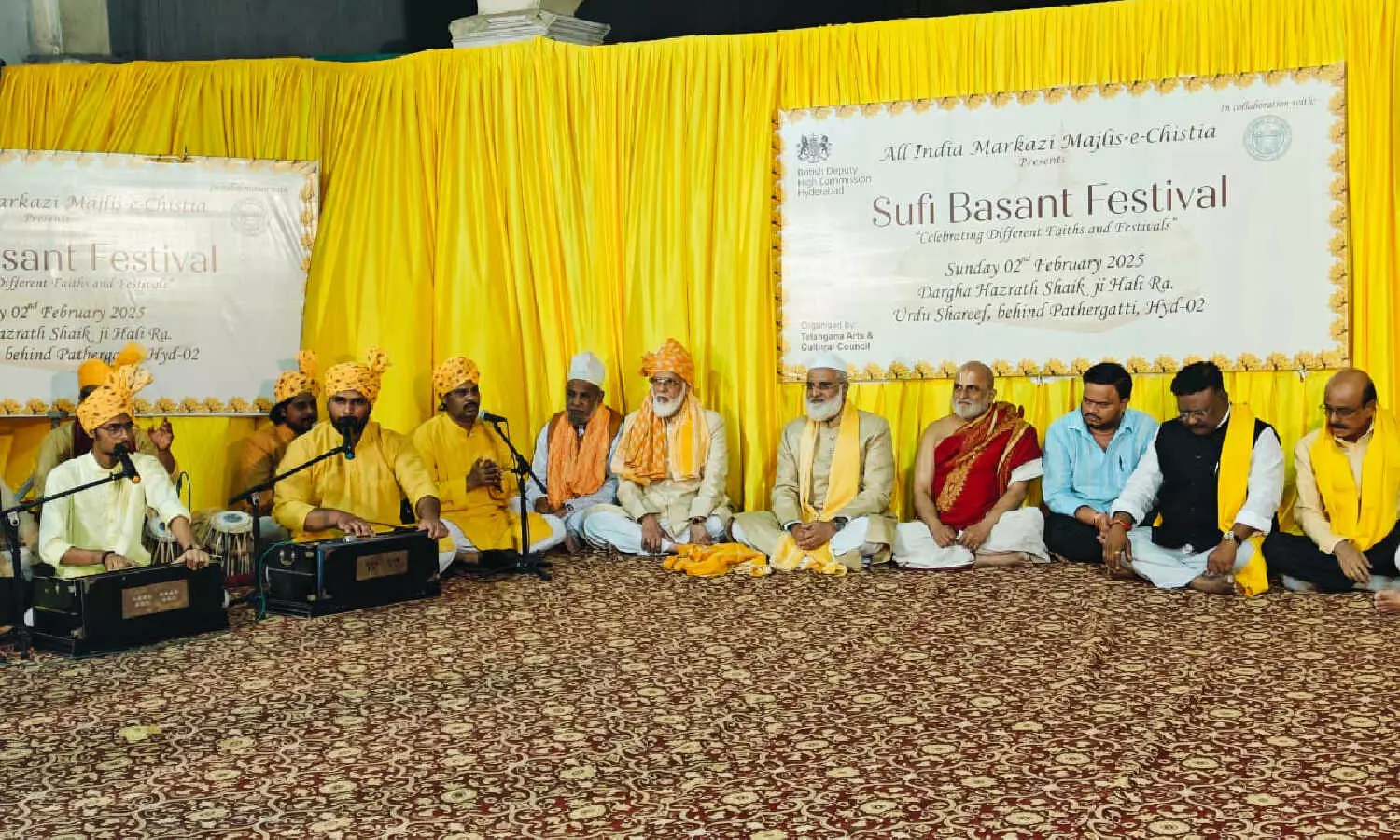Hyderabad: Chilkur priest Rangarajan visits Urdu Shariff dargah, celebrates Basant with Muslims
Hyderabad Chilkur Balaji temple priest Rangarajan sets example of communal harmony by celebrating Basant at Urdu Shariff dargah
By Newsmeter Network
Hyderabad: Chilkur Balaji temple priest Rangarajan celebrates Basant Panchmi with minorities at Urdu Shariff dargah
Hyderabad: For those who spread hate, this should be an eye-opener!
On a sunny Sunday afternoon, Chilkur Balaji Temple Chief Priest C S Rangarajan embarked on a unique yatra in Hyderabad’s old city: To celebrate `Indianess’ with Muslim brethren at the historic dargah of Hazrat Shaikh Ji Hali.
The visit comes at a time when Muslims in Prayagraj set another example of communal harmony by opening shrines and mosques for Hindu pilgrims after the tragic stampede at Maha Khumb.
Walking through narrow lanes painted yellow, Rangarajan was greeted by Muslims with love and affection. Eyes welled up as Hindus and Muslims embraced each other. Of late, this unique trait of brotherhood has been missing in India's political-social milieu.
The occasion for bonhomie was the grand old tradition of celebrating Basant at the dargah of Hazrat Shaikh Ji Hali.
The entire premises of the dargah, popularly known as Urdu Shariff, presented a unique picture with the devout wearing yellow clothes in tune with the tradition started at Hazrat Nizamuddin Dargah in New Delhi about eight centuries ago. Yellow flowers will be offered to the saint resting at the shrine.
Celebrating Basant may have been a norm at various Sufi dargahs in north India, but it is rarely celebrated in the Vindhyas.
Muzaffar Ali Soofi Chisti, the custodian of Hazrat Shaikh Ji Hali dargah, revived the tradition in south India a few years ago. Incidentally, Basant was celebrated as an official festival in Hyderabad of yore – both during the Qutub Shahi and the Asaf Jahi regimes. While mustard flowers are used for decoration and offering at Hazrat Nizamuddin and other Sufi dargahs, in Hyderabad Gul-e-Dawoodi (flowers of David) are extensively used.
According to city historian and INTACH Hyderabad convener P Anuradha Reddy, the gardens of chrysanthemum (Gul-e-Dawoodi in Urdu and Persian) used to welcome visitors to the Qutub Shahi Hyderabad and Golconda. The tradition of using chrysanthemum for Basant has been in vogue in Hyderabad for four centuries.
“Though Qutub Shahis were Persian in origin and Basant was a government holiday under their rule. The king personally used to participate in the festival. The flavors of Qutub Shahi Basant can be witnessed in the celebrations at Urdu Shariff,” Reddy said.
Muzaffar Ali Soofi recalls that the idea behind reviving the Basant Sufi festival in Hyderabad is to celebrate the oneness of humanity and respect the faith and festivals of all. There will be a rendition of exclusive lyrical compositions of saint-poet Hazrat Amir Khusrau.
“Yellow is not only the color of Basant, but it is also the hue of spirituality and symbol of unity, which Hyderabad has always stood for,” Soofi said, urging devout to bring yellow flowers and gifts wrapped in yellow paper for fellow participants.
Rangarajan appreciated the efforts of Muzaffar Ali Soofi for reviving this tradition in South India, especially in these times of severe friction among communities over volatile issues. These festivities added flavor to peaceful coexistence.